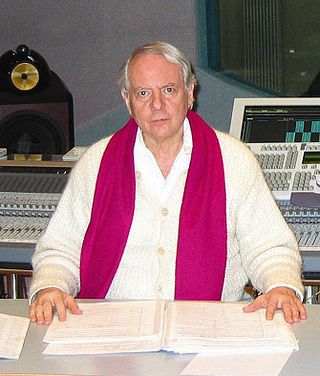| Solo instrument | Recordings |
|---|
| Flute | - Karlheinz Stockhausen: Musik für Flöte. Kathinka Pasveer, flute. 2-CD set. Stockhausen Complete Edition CD 28A-B. Kürten: Stockhausen-Verlag, 1992.
|
| Recorder | - Karlheinz Stockhausen: In Freundschaft für Blockflöte, für Fagott, für Horn, für Kontrabass. Geesche Geddert, alto recorder. Stockhausen Complete Edition CD 101. Kürten: Stockhausen-Verlag, 2012.
|
| Oboe | - Christian Hommel: Bach, Mozart, Huber, Stockhausen. Christian Hommel, oboe; Kay Johannsen [ de ], harpsichord. CD recording. Ars Musici Primavera AMP 5005-2. Primavera HM 2067-2. Freiburg: Ars Musici, 1993. Also issued on CD as Deutsche Harmonia Mundi HM/DMR 2067-2. Freiburg: Freiburger Musik Forum, 1993. [23]
- Karlheinz Stockhausen: In Freundschaft for oboe; Linker Augentanz; Taurus; Taurus-Quintett; Kamel-Tanz; Rotary-Bläserquintett . Claire Sirjacobs, oboe. CD recording, 1 disc: digital, 12 cm, stereo. Stockhausen Complete Edition CD 105. Kürten: Stockhausen-Verlag, 2015.
|
| Clarinet | - Stockhausen: In Freundschaft, Traum-Formel, Amour. Suzanne Stephens, clarinet & basset horn. CD recording. Deutsche Grammophon 419 378–2. Hamburg: Polydor International GmbH, 1988. Reissued on Deutsche Grammophon 423 378–2. Hamburg: Polydor International GmbH, 1988. Reissued on Stockhausen Complete Edition CD 27 (CD). Kürten: Stockhausen-Verlag, 1992.
- Clarinet in the XXth Century. Ivan Stochl, clarinet; Boris Nedeltchev, piano. CD recording. Gega GD 120 1991. Sofia: Gega, Ltd., 1992. [24]
- 20th Century Music for Unaccompanied Clarinet. Paul Meyer, clarinet. CD recording. Denon CO-78917. [Tokyo]: Nippon Columbia Co., Ltd., 1994. [25]
- Dal Niente. Eduard Brunner, clarinet. CD recording. ECM New Series ECM1599 453 257–2. [Germany]: ECM Records GmbH, 1997. [26]
- Alain Damiens Clarinette. Alain Damiens, clarinet. CD recording. ADDA 581066. 1988. Reissued as: Damiens: Clarinet Solos. 06/17/2002. CD recording. Accord 472337. [27]
|
| Basset horn | - Musik für Klarinette, Baßklarinette, Bassetthorn: Suzee Stephens spielt 15 Kompositionen. Stockhausen Complete Edition CD 32 A–C (3 CDs). Kürten: Stockhausen-Verlag, 1994.
- Karlheinz Stockhausen for Basset Horn. Michele Marelli, basset horn. Times Future. CD recording, stereo. Stradivarius STR 33958. [Cologno Monzese (Milan)]: Stradivarius, 2013. [28]
|
| Bass clarinet | - Karlheinz Stockhausen: Bass Clarinet & Piano. Volker Hemken, bass clarinet; Steffen Schleiermacher, piano. 09/25/2007. CD recording. MDG 6131451. Detmold: Musikproduktion Dabringhaus und Grimm, 2007. [29]
- In Freundschaft, für Violine, Bassklarinette, Viola, Tuba, Violoncello. Petra Stump, bass clarinet. Recorded 34 May 2013 at Sound Studio N, Cologne. CD recording, 1 disc: digital, 12 cm, stereo.Stockhausen Complete Edition CD 102. Kürten: Stockhausen-Verlag, 2014.
|
| Saxophone | - Daniel Kientzy: Saxophones. Daniel Kientzy [ de ], saxophone. CD recording. ADDA 581047. With works by Berio, Cacana, Mache, Scelsi, Stroe, and Vaggione. [30]
- Arno Bornkamp: Reed My Mind: Contemporary Music for Saxophone. Arno Bornkamp, alto saxophone. CD recording. BVHaast CD 9304. Amsterdam: BVHaast, 1994. [31]
- Outline. Giovanni Nardi, soprano saxophone. CD recording. Video Radio Classics (Italy) VR CD 000412. [32]
- The Solitary Saxophone. Claude Delangle, saxophone. CD recording. Bis CD-640. Djursholm: Grammofon AB BIS, 1994. [33]
- Scena. Timothy McAllister, saxophone. Mead, Lauba, Steinberg, Carter,07/25/2000 CD recording. Equilibrium EQ 32. Dexter, MI: Equilibrium, 1999. [34]
- In Friendship. James Romain, saxophone; Kevin Class, piano. 05/27/2008 CD recording. Centaur CRC 2916. [Baton Rouge, La.]: Centaur Records, 2008. [35]
- Saxophon. Julien Petit, saxophon. CD recording. Stockhausen Complete Edition CD 78. Kürten: Stockhausen-Verlag, 2005.
|
| Bassoon | - Stockhausen: Music for Bassoon. Knut Sönstevold, bassoon; Kina Sönstevold, piano. CD recording. Nosag CD 42. [Sweden]: Nosag Records, 2000. [36]
- Bassoon XX/Fagott XX. Rino Vernizzi, bassoon; Gianpaolo Ascolese, drum set; Gianluca Renzi, double Bass; New Music Studium, Antonio Plotino, cond. CD recording. Arts Music 47644. [Germany]: Arts Music, 2001. [37]
- Karlheinz Stockhausen: In Freundschaft für Blockflöte, für Fagott, für Horn, für Kontrabass. Edurne Santos, bassoon. Stockhausen Complete Edition CD 101. Kürten: Stockhausen-Verlag, 2012.
|
| Horn | - Karlheinz Stockhausen: In Freundschaft für Blockflöte, für Fagott, für Horn, für Kontrabass. Christine Chapman, horn. Stockhausen Complete Edition CD 101. Kürten: Stockhausen-Verlag, 2012.
|
| Trumpet | - Markus Stockhausen Plays Karlheinz Stockhausen. Markus Stockhausen, trumpet; Niek de Groot, contrabass; Annette Meriweather, soprano. CD recording. EMI Classics 7243 5 56645 2 5. Cologne: EMI Electrola GmbH, 1998. Reissued on: Stockhausen: Aries, Halt, Pietà, In Freundschaft. Stockhausen Complete Edition 60. Also reissued on: 20th Century Classics. 2-CD set. EMI Classics 6955982. [London]: EMI Classics, 2009.
|
| Trombone | - The Solitary Trombone. Christian Lindberg, trombone. CD recording. Bis CD-388. Djursholm: Grammofon AB BIS, 1989. [38]
- Musik für Posaune und Euphonium. Michael Svoboda, trombone and euphonium. CD recording. Stockhausen Complete Edition CD 44. Kürten: Stockhausen-Verlag, 1997.
|
| Tuba | - In Freundschaft, für Violine, Bassklarinette, Viola, Tuba, Violoncello. Hans Nickel, tuba. Recorded 24 March 2012 at Sound Studio N, Cologne. CD recording, 1 disc: digital, 12 cm, stereo. Stockhausen Complete Edition CD 102. Kürten: Stockhausen-Verlag, 2014.
|
| Violin | - In Freundschaft, für Violine, Bassklarinette, Viola, Tuba, Violoncello. Raul Lustgarten, violin. Recorded 14 December 2013 at Sound Studio N, Cologne. CD recording, 1 disc: digital, 12 cm, stereo. Stockhausen Complete Edition CD 102. Kürten: Stockhausen-Verlag, 2014.
|
| Viola | - In Freundschaft, für Violine, Bassklarinette, Viola, Tuba, Violoncello. Anna Tkatchouk, viola. Recorded 30 March 2014 at Sound Studio N, Cologne. CD recording, 1 disc: digital, 12 cm, stereo. Stockhausen Complete Edition CD 102. Kürten: Stockhausen-Verlag, 2014.
|
| Cello | - Ciaccona. Friedrich Gauwerky [ de ], cello. LP recording. Edition Michael F. Bauer MFB 048. [German]: Edition Michael F. Bauer, 1987.
- In Freundschaft, für Violine, Bassklarinette, Viola, Tuba, Violoncello. Friedrich Gauwerky, cello. Recorded 17 March 2012 at Sound Studio N, Cologne. CD recording, 1 disc: digital, 12 cm, stereo. Stockhausen Complete Edition CD 102. Kürten: Stockhausen-Verlag, 2014.
|
| Double bass | - Karlheinz Stockhausen: In Freundschaft für Blockflöte, für Fagott, für Horn, für Kontrabass. Heiko Maschmann, double bass. Stockhausen Complete Edition CD 101. Kürten: Stockhausen-Verlag, 2012.
|


















